A biweekly newsletter with public space news, resources, and opportunities.
A curated dispatch on all things public markets plus the latest announcements from the Market Cities Program.
Project for Public Spaces’ Market Cities Program Manager Kurt Wheeler spoke to Stacia Thompson, President & CEO of the Sherman Phoenix Foundation, about what it means to be at the forefront of community-driven redevelopment, inclusive economic development, and legacy wealth-building. Overseeing a nationally recognized market, Stacia offers insight into how thriving market hubs can promote long-term social and economic outcomes. Learn more from Stacia and her colleague JoAnne Sabir, Co-Founder, Sherman Phoenix & Entrepreneurial Ecosystem Builder, at our upcoming online mini-training, "Growing Hope & Legacy Wealth in Marketplaces: Lessons from Sherman Phoenix” on November 4 and 6, 2025, 10am-12pm ET. Learn more and register.
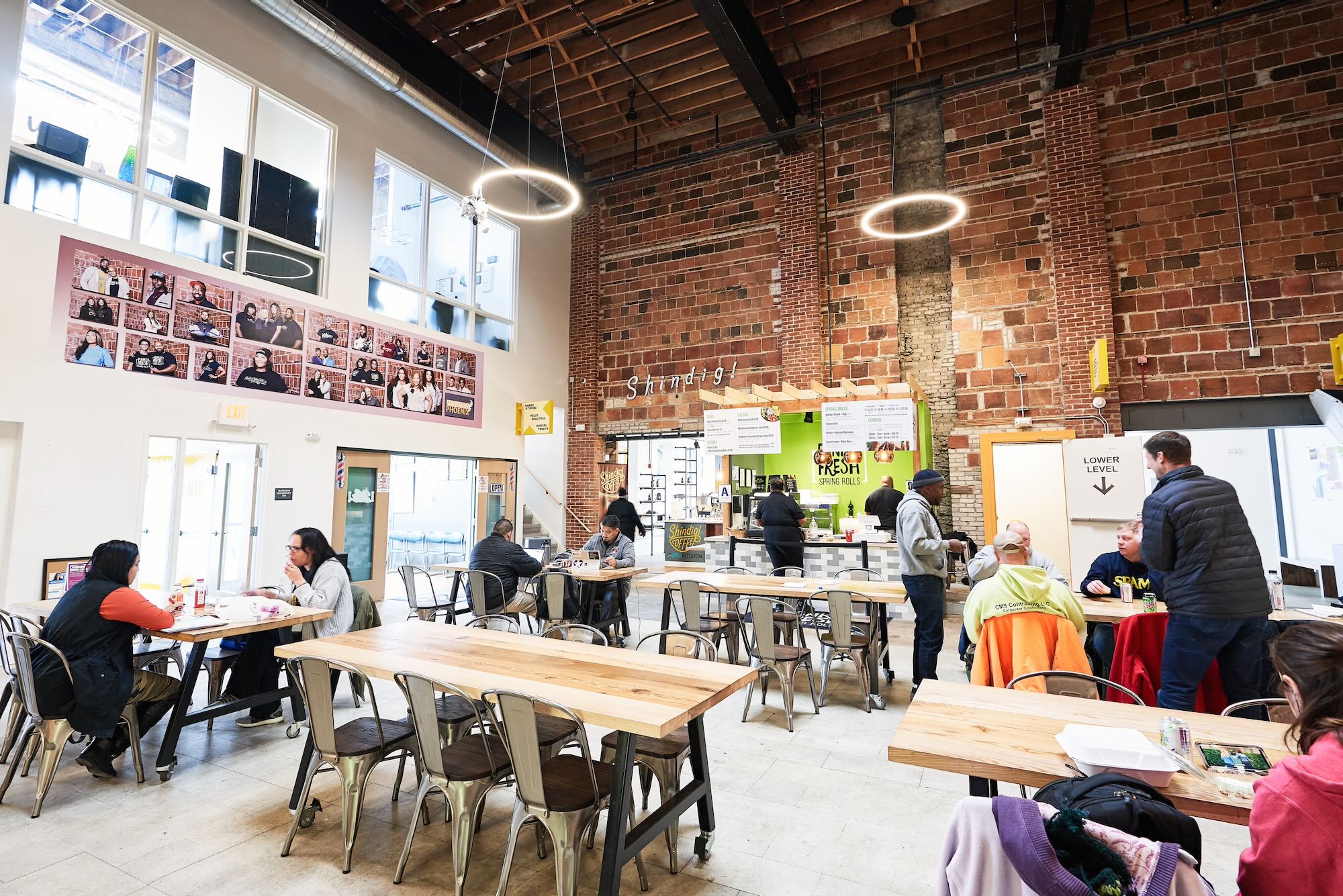
Kurt Wheeler (KW): The Sherman Phoenix Marketplace has such an inspiring backstory. Can you tell us about how it started?
Stacia Thompson (ST): The Sherman Phoenix Marketplace isn't a typical market; it's a testament to the resilience of a community. What sets it apart is its powerful origin story. It wasn't conceived as a planned economic development project but was born directly from a community tragedy. In 2016, following civil unrest in the Sherman Park neighborhood of Milwaukee, the building that is now the Sherman Phoenix was one of many that were burned down. This history transforms it from a simple retail space into a symbol of transformation and triumph, a "phoenix rising from the ashes." It represents the community's ability to turn fire and water damage into a vibrant marketplace and business incubator.
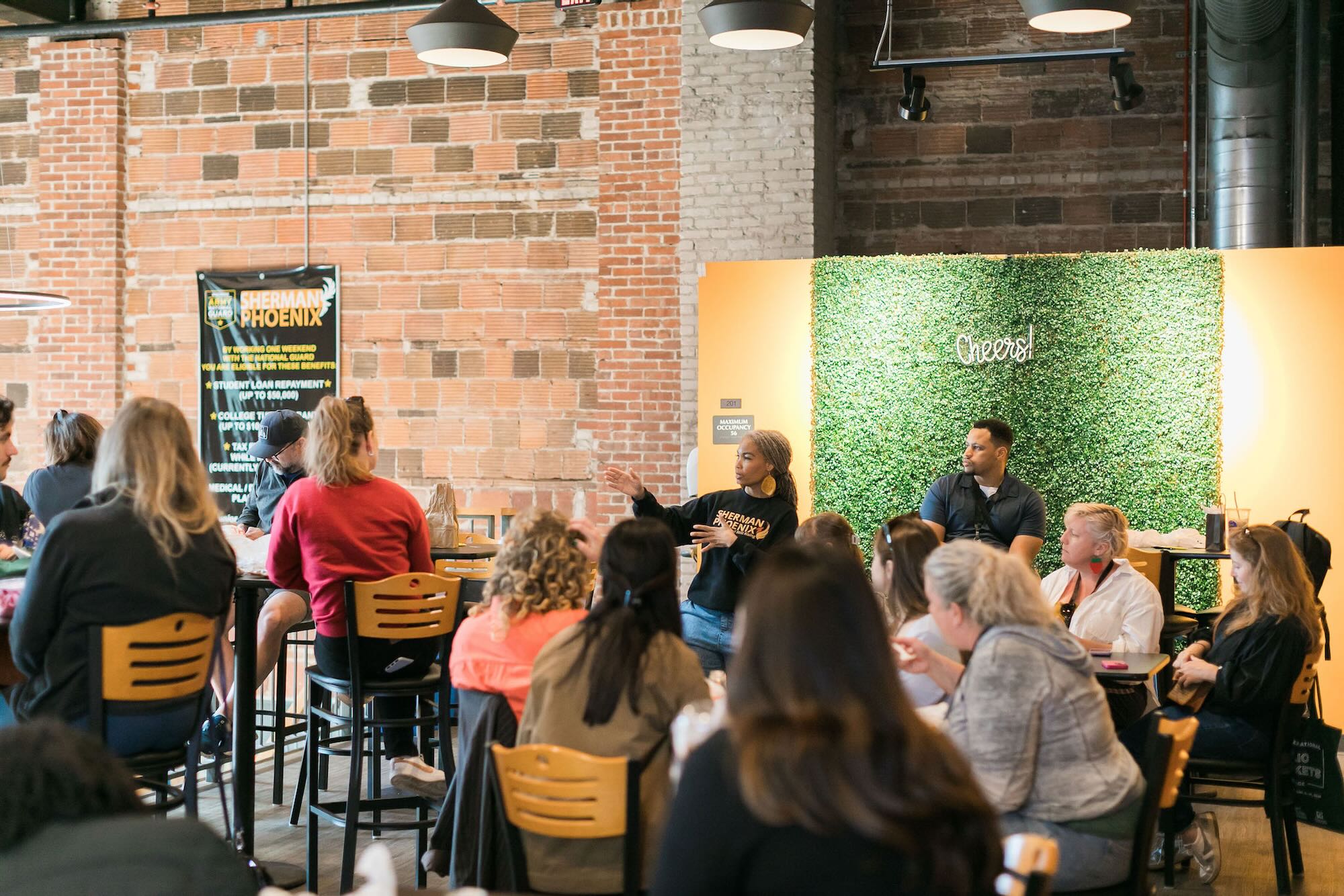
The Sherman Phoenix's unique approach has deeply resonated with the community, funders, and partners. Rather than being a traditional commercial landlord, the Phoenix operates as a social enterprise. It provides essential technical assistance and support, going beyond a simple tenant-landlord relationship. This model has struck a chord because it prioritizes the success of its resident businesses. Since 2018, it has been home to over 60 businesses, proving its effectiveness as a true community space.
KW: What sets the Sherman Phoenix Marketplace apart from other markets with similar missions? What specific aspects of the model have resonated with the community, funders, and partners?
ST: The overwhelming support from the community is what truly defines the Sherman Phoenix's success. This immediate, grassroots backing—received through philanthropic gifts, community investments, and crowdfunding—was a powerful endorsement of its mission. This model demonstrates that with community buy-in, it’s possible to create not just a physical space, but a sustainable ecosystem that directly benefits and uplifts the people it serves. This unique approach to healing and economic empowerment has deeply resonated with everyone involved, from funders to partners.
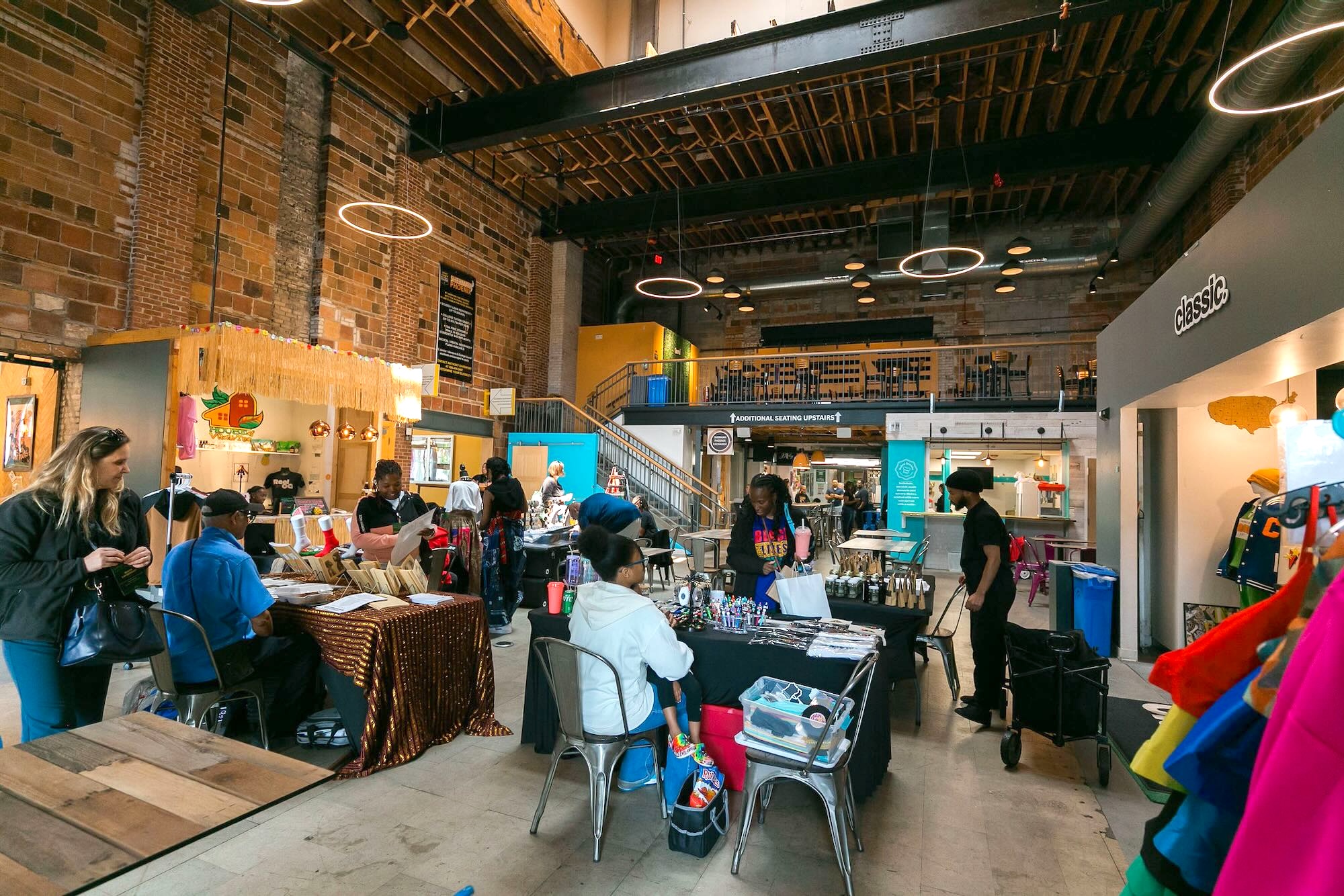
KW: How does the Sherman Phoenix measure success? Do you have any tips for other markets on how to evaluate and communicate their impact to stakeholders?
ST: The Sherman Phoenix measures its success in concrete and intentional ways. It tracks the number of businesses it serves and, most importantly, their longevity and growth. Of the original 27 businesses from 2018, over 80% are still operating, a statistic that surpasses national averages and speaks to the resilience built into their model.
Beyond business metrics, the organization measures its impact through direct community engagement and feedback. Surveys and feedback loops ensure that programming is intentional and meets the needs of the community, rather than being based on internal opinions. This impact is then communicated to stakeholders through an annual report that includes key statistics, success stories of alumni businesses, and direct quotes from the community, providing a comprehensive and authentic picture of its reach.
KW: Successful markets need buy-in from diverse community stakeholders with different values and perspectives. How do you build trust across all these groups, and which stakeholders do you think are often overlooked?
ST: Building trust with diverse stakeholders is a cornerstone of the Sherman Phoenix's model. We achieve this through constant communication, intentional engagement, and by actively opening our space for collaboration with constituents from across the area. We avoid gatekeeping and instead work to complement the efforts of other organizations. By meeting to discuss what each group offers, we are able to work together seamlessly to provide comprehensive services to the community. This collaborative approach helps bridge the gaps in services and ensures that the Sherman Phoenix's efforts are always aligned with the needs of its partners and the wider community.
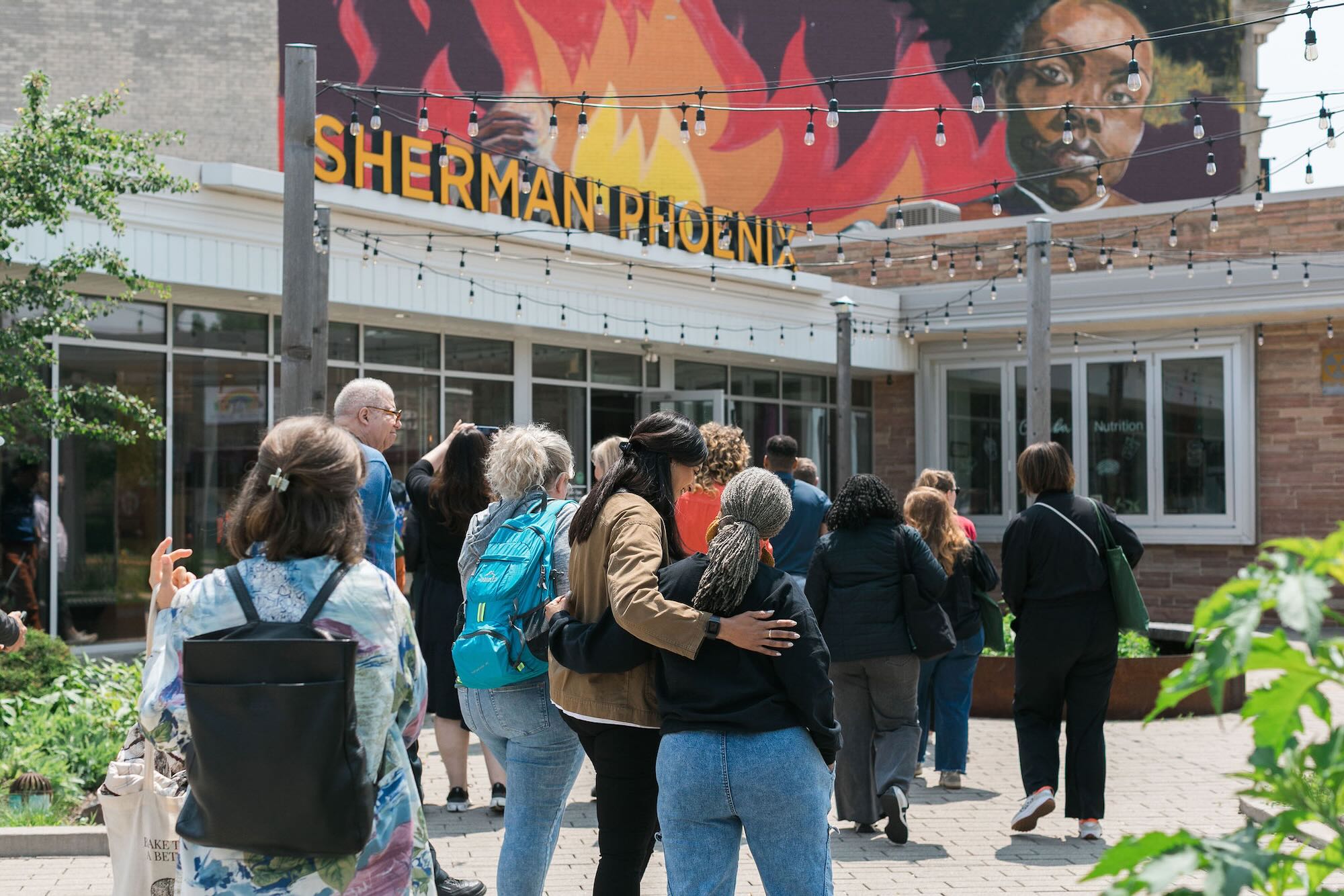
KW: What does meaningful community engagement look like to you—and how do you ensure it’s sustained beyond the initial phases of a project?
ST: For us, meaningful community engagement is an ongoing, adaptive process that goes far beyond a grand opening. It’s about being a genuine community partner and a shared space, not just a building. To ensure this engagement is sustained beyond the initial phases of our project, we treat it as a core part of our daily operations.
We maintain a constant dialogue with our neighbors, businesses, and local leaders, actively using their feedback to shape our programming and the space itself. By consciously welcoming people from all parts of the area and collaborating with other organizations, we are intentionally building a resilient network of support. We believe in being a complement to the existing ecosystem, not a gatekeeper, which ensures our relevance and value to the community for the long term.
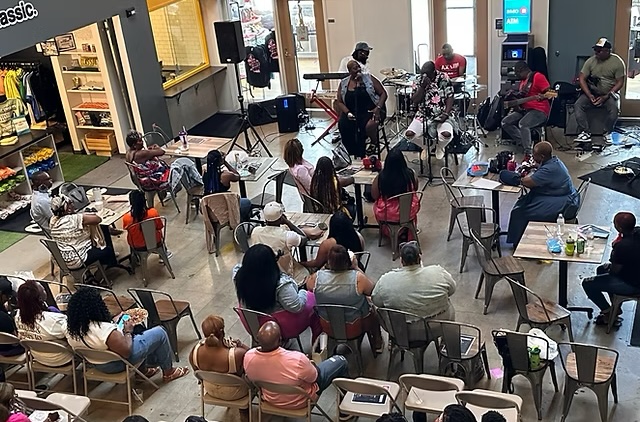
Our programming at the Sherman Phoenix is wide ranging, from hosting fun events including live music and line dancing, to small business talks and mental health and wellness classes. This offers something for everyone in the community to connect with Sherman Phoenix, while creating another avenue for us to stay connected and better understand their needs and wishes.
Dr. Stacia Thompson is the President & CEO of the Sherman Phoenix Foundation in Milwaukee, WI. Dr. Thompson is known for being a change agent in developing economic empowerment and workforce strategies. With deep expertise in community development, program development, entrepreneurial services and economic development, she is also an expert speaker and facilitator for diversity, equity and inclusion initiatives. Her previous roles include tenures at the University of Wisconsin Parkside, Gateway Technical College, City Colleges of Chicago and the YWCA of Metropolitan Chicago.
In addition to her professional roles, Thompson has served on many boards such as Community Women’s Club, Hispanic Business and Professionals Association, National Council of Workforce Education, Career Launch Chicago Advisory Committee, Cook County Coordinated Re Entry Council, Digital Manufacturing and Design Innovation Institute Workforce Development Board, Racine Creative Center, The Main Project, Islands of Brilliance, and Fathers Making Progress. She is a past recipient of the UW Parkside Community Service Award, YWCA of Southeast Wisconsin Women of Distinction Award, Black Softball Circuit Hall of Fame inductee, Professional Women’s Network for Service Inspiring Women Leadership Award, Milwaukee Business Journal Woman of Influence, 98.3 Black History Jammin’ Legend and Milwaukee Community Journal Diamond Honoree. Under her leadership, the Sherman Phoenix was awarded the BizTimes Non-Profit Social Enterprise of the Year.

This mini-course explores the Sherman Phoenix Marketplace as a nationally recognized model for community-driven redevelopment, inclusive economic development, and legacy wealth-building. Designed for practitioners working in community engagement, redevelopment, urban markets, and entrepreneurial ecosystems, this training offers practical strategies for building entrepreneurial support systems, engaging residents, and securing funding for sustainable, market-based projects rooted in community assets.
Course Session Dates
The rich text element allows you to create and format headings, paragraphs, blockquotes, images, and video all in one place instead of having to add and format them individually. Just double-click and easily create content.
The rich text element allows you to create and format headings, paragraphs, blockquotes, images, and video all in one place instead of having to add and format them individually. Just double-click and easily create content.
Body Text Body Link
The rich text element allows you to create and format headings, paragraphs, blockquotes, images, and video all in one place instead of having to add and format them individually. Just double-click and easily create content.
Here is some highlighted text from the article.




Headings, paragraphs, blockquotes, figures, images, and figure captions can all be styled after a class is added to the rich text element using the "When inside of" nested selector system.
Headings, paragraphs, blockquotes, figures, images, and figure captions can all be styled after a class is added to the rich text element using the "When inside of" nested selector system.
Headings, paragraphs, blockquotes, figures, images, and figure captions can all be styled after a class is added to the rich text element using the "When inside of" nested selector system.

We are committed to access to quality content that advances the placemaking cause—and your support makes that possible. If this article informed, inspired, or helped you, please consider making a quick donation. Every contribution helps!
Project for Public Spaces is a 501(c)(3) tax-exempt organization and your donation is tax-deductible within the guidelines of U.S. law.